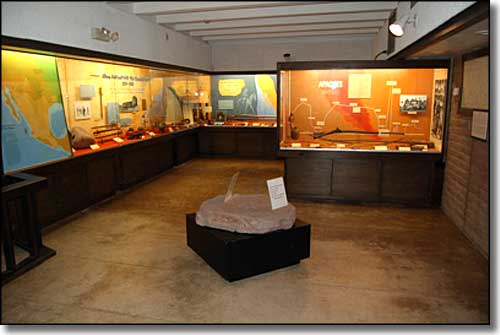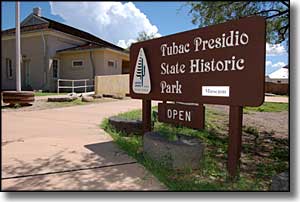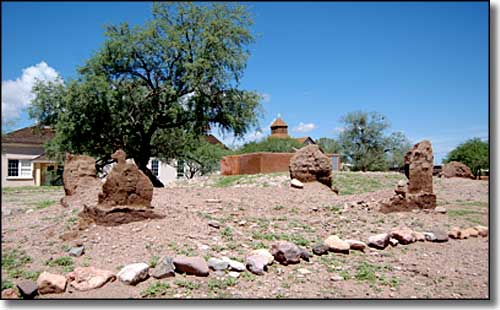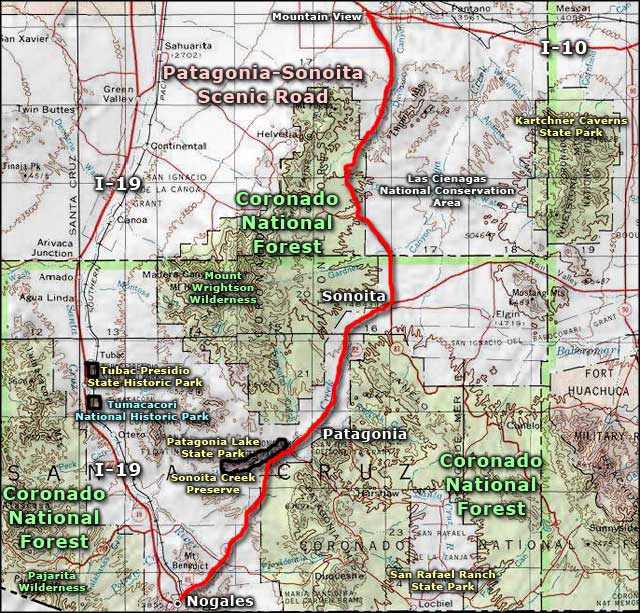
Tubac Presidio State Historic Park

Inside the Museum at Tubac Presidio State Historic Park

The Presidio San Ignacio de Tubac was founded in June, 1752 on the northern frontier of Spain's New World empire. 50 cavalrymen were stationed here to protect the colonists and the Catholic mission. The second commander of the Presidio, Juan Bautista de Anza II, led two overland expeditions from here to the Pacific Coast, one of them founding San Francisco in 1776. Several hundred colonists from Sonora and Sinaloa traveled with him, as did 60 colonists from Tubac. After de Anza returned from California, the military authorities moved the garrison from Tubac to Tucson and most of the Tubac settlers abandoned their homes.
Without military protection, the remaining folks at Tubac suffered continual Apache raids until the Spanish Viceroy reactivated the presidio in 1787. This time, the military garrison was composed of Pima Indian troops and Spanish officers. Mexico declared independence from Spain in 1821 and the flag of the Republic of Mexico flew over the presidio until 1848. At that time, with most of the attention being paid to the Mexican-American war, the Apaches attacked Tubac and killed many people. The following year, many more folks left Tubac headed for the gold fields in California and the presidio became a virtual ghost town.
In 1853, the Gadsden Purchase made Tubac an American town and Eastern entrepreneurs came in. The area was resettled and developed with people such as Charles D. Poston forming the Sonora Exploring and Mining Company and using the abandoned Commandant's house as his headquarters. Poston performed marriages and baptisms, granted divorces and printed his own money to pay his employees. In 1859 he brought in a printing press and began putting out Arizona's first newspaper. By 1860, Tubac was the largest town in the territory. Then the Civil War happened and a lot of men left. With the town unprotected again, the Apache problem started up and shortly, Tubac was again deserted. Some folks returned after the war but with the silver strikes in Tombstone and the railroad routed through Tucson, Tubac never again regained its importance. The presidio was manned again for a while in the 1880's while Geronimo and the Chiricahua's were being hunted and returned to their reservation.
Archeologists from the University of Arizona excavated portions of the presidio in 1974. An underground display of some of the original foundations, walls and the 1752 Commandant's quarters was opened to the public in 1976.
Tubac Presidio State Historic Park is located off of I-119, about 45 miles south of Tucson. The State Historic Park offers a museum with underground archeology display, old school house and community hall, picnic area, and trailhead marking the beginning of the Juan Bautista de Anza National Historic Trail to San Francisco. The park is open daily (except Christmas Day) from 8:00 AM to 5:00 PM.

Ruins of the original adobe Presidio at Tubac.

Tubac Presidio State Historic Park area map
